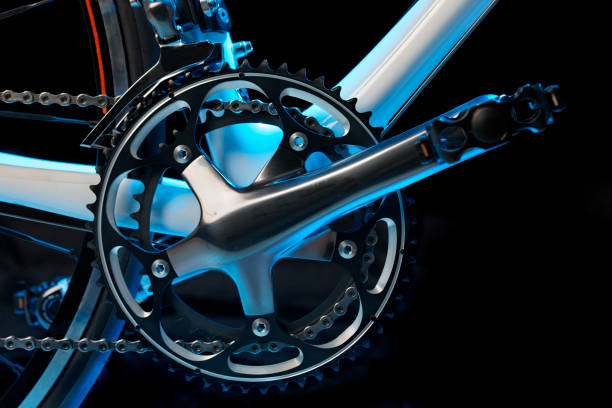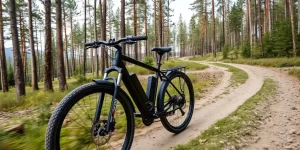Introduction
Electric bikes, or e-bikes, have revolutionized the cycling world, offering riders a boost of power to tackle hills, headwinds, and long distances with ease. At the heart of many e-bikes lies the mid-drive motor, a powerful and efficient system that integrates seamlessly with the bike’s drivetrain.
To7motor, a leading manufacturer of e-bike motors, has introduced their DM-Series mid-drive motors, designed to provide unparalleled performance and compatibility with a wide range of bike styles.
However, before you can experience the thrill of riding with a To7motor mid-drive motor, you need to ensure that it will fit your bike.
This comprehensive guide will walk you through the essential aspects of bottom brackets, chainlines, and motor compatibility, empowering you to make an informed decision when upgrading your bike with a To7motor mid-drive motor.
What is a Bottom Bracket?
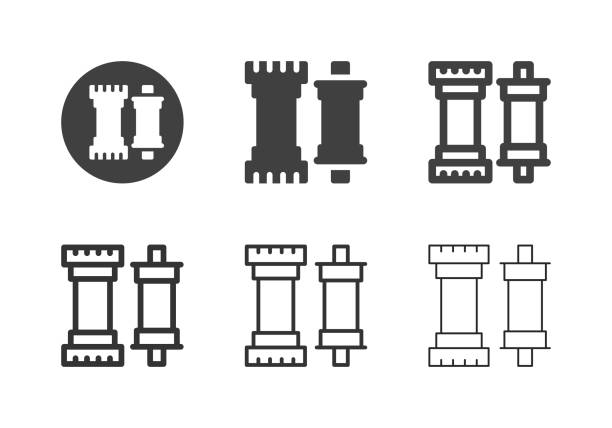
The bottom bracket is a crucial component of your bike, serving as the interface between the frame and the crankset. It consists of a spindle and bearings housed within the bottom bracket shell of the frame.
The bottom bracket allows the crankset to rotate smoothly, transferring power from the pedals to the drivetrain.
How to Check the Size of Your Bottom Bracket?
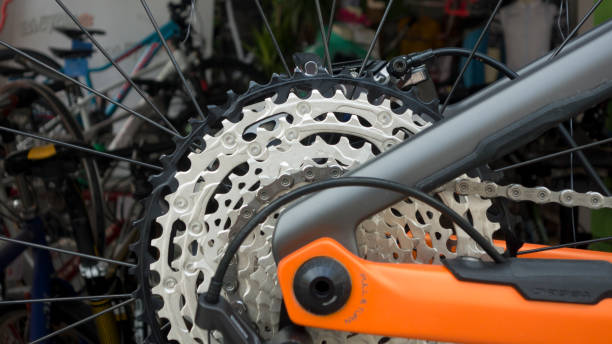
To determine the size of your bike’s bottom bracket, you’ll need to measure the width of the bottom bracket shell and the diameter of the shell’s interior
- Bottom Bracket Shell Width: Measure the width of the bottom bracket shell using a caliper or a ruler. Common widths include 68mm (road bikes), 73mm (mountain bikes), and 100mm or 120mm (fat bikes).
- Bottom Bracket Shell Diameter: Measure the interior diameter of the bottom bracket shell. This measurement will help determine the type of bottom bracket (threaded or press-fit) and the compatible cup sizes
Differences Between ENGLISH (BSA) and ITALIAN Threaded Bottom Brackets
English (BSA) and Italian threaded bottom brackets are two of the most common threaded bottom bracket standards, but they have several key differences that make them incompatible with each other
- Shell Width: English bottom brackets have a shell width of 68mm, while Italian bottom brackets have a wider shell width of 70mm.
- Thread Pitch: English bottom brackets use a thread pitch of 1.37″ x 24 TPI (threads per inch), whereas Italian bottom brackets have a slightly larger thread pitch of 36mm x 24 TPI.
- Shell Diameter: The shell diameter for English bottom brackets is 34.8mm, while Italian bottom brackets have a larger shell diameter of 36mm.
- Threading Direction: On English bottom brackets, the non-drive side (left side) cup has a right-hand thread (tightens clockwise), and the drive-side (right side) cup has a left-hand thread (tightens counterclockwise). Italian bottom brackets, however, have right-hand threads on both sides, meaning both cups tighten clockwise.
- Compatibility: Due to the differences in shell width, thread pitch, and shell diameter, English and Italian bottom brackets are not interchangeable. Using the wrong type of bottom bracket can lead to damage to the frame or the bottom bracket itself.
It’s crucial to identify the correct bottom bracket standard for your bike frame to ensure proper compatibility and function.
While Italian threaded bottom brackets are less common than English (BSA) bottom brackets, they can still be found on some Italian-made frames, such as those from Colnago and Pinarello.
In summary, the main differences between English (BSA) and Italian threaded bottom brackets lie in their shell width, thread pitch, shell diameter, and threading direction. Understanding these differences is essential for selecting the appropriate bottom bracket for your bike and avoiding potential damage caused by using an incompatible standard.
The Two Types of Bottom Brackets
There are two main types of bottom brackets: threaded and press-fit.
- Threaded Bottom Brackets: Threaded bottom brackets have been the standard for many years. They feature threaded cups that screw into the frame’s bottom bracket shell. The most common threaded bottom bracket standard is BSA (British Standard), which has a 1.37″ x 24 TPI (threads per inch) thread on both sides of the shell.
- Press-Fit Bottom Brackets: Press-fit bottom brackets have gained popularity in recent years, particularly on high-end bikes. They rely on a precise interference fit between the bottom bracket cups and the frame’s bottom bracket shell. The cups are pressed into the frame rather than threaded. Common press-fit standards include BB30, PF30, and BB86/92.
What is a Chainline?
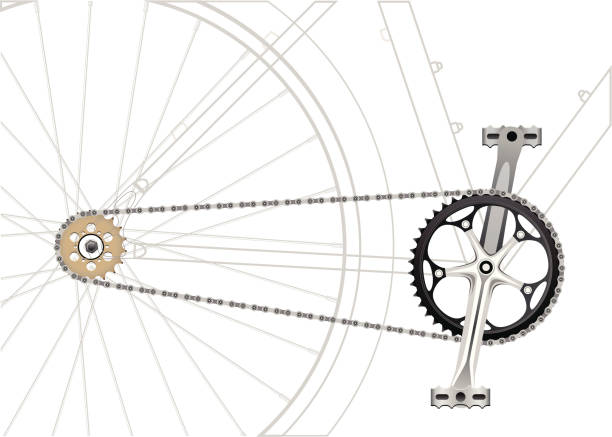
Chainline refers to the imaginary line that runs through the center of the bike’s drivetrain, from the front chainring(s) to the rear sprocket(s).
Ideally, the chainline should be as straight as possible to ensure efficient power transfer and smooth shifting.
How to Check the Size of Your Chainline
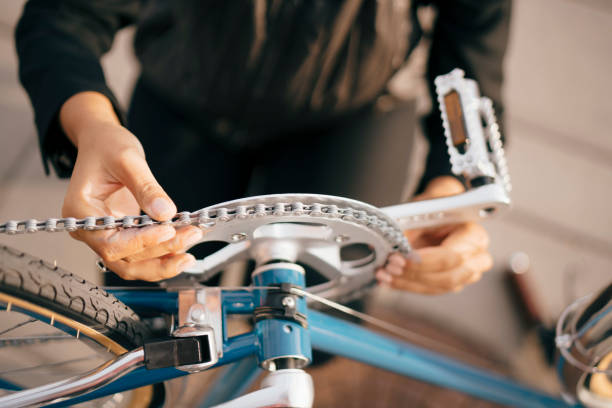
Measuring your bike’s chainline is essential to ensure proper alignment and compatibility with a mid-drive motor.
- Front Chainline: For bikes with a single chainring, measure from the center of the chainring to the center of the frame. For bikes with multiple chainrings, measure from the center of the middle chainring to the center of the frame.
- Rear Chainline: Measure from the center of the cassette or freewheel to the center of the frame.
To7motor Mid-Drive Motor Specifications
DM-01 Bottom Bracket and Chainline Compatibility
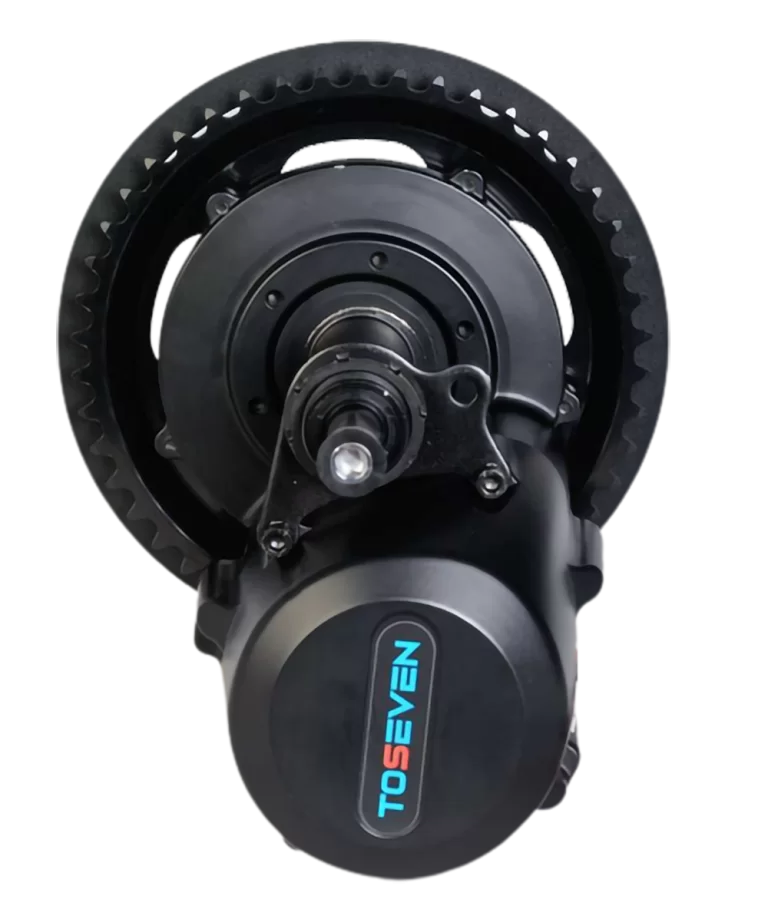
The DM-01 is a powerful mid drive motor with up to 1000W output and 160Nm of torque. It uses an integrated torque and cadence sensor for smooth, responsive assist. The DM-01 is compatible with 48V-60V batteries and fits a wide range of bottom bracket sizes.
According to To7motor’s documentation, the DM-01 motor is available in the following bottom bracket and chainline configurations:
- BB=68mm CL=50mm or 59mm (DM01-1000, DM01-750)
- BB=73mm CL=52.5mm or 61.5mm (DM01-1000, DM01-750)
- BB=100mm, CL=66mm or 75mm (DM01L-1000, DM01L-750)
- BB=110mm, CL=71mm or 80mm (DM01L-1000, DM01L-750)
- BB=120mm, CL=76mm or 85mm (DM01LA-1000, DM01LA-750)
The “BB” value is the width of the bottom bracket shell, while “CL” is the chainline from the frame center to the motor’s chainring. The DM01 fits standard BSA threaded shells (68-73mm) as well as some press-fit shells up to 120mm wide, likely using adapters.
The chainline options cover a range from 50mm to 85mm, which should work with most mountain bike and fat bike drivetrains. The 50mm chainline matches a typical Boost 1x setup. The wider chainlines are for frames with extra-wide bottom bracket shells, often found on fat bikes.
To determine if the DM-01 will fit your bike, measure your frame’s bottom bracket shell width and compare it to the available BB options. Then check your bike’s chainline and see if it falls within the CL range.
If your measurements match one of the DM-01 configurations, it should be compatible.
DM-02 Bottom Bracket and Chainline Compatibility
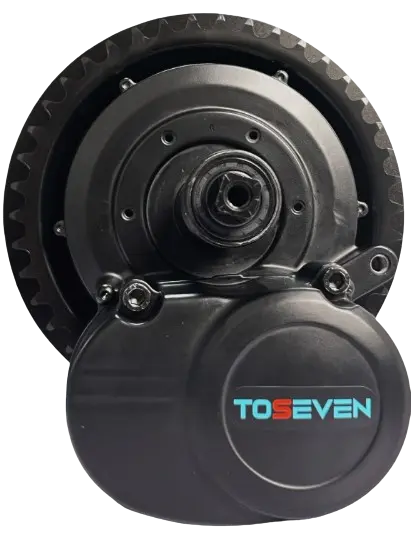
The DM-02 is To7motor’s lighter-duty mid drive motor, with power options from 250W to 500W and up to 90Nm of torque.
Like the DM-01, it has integrated torque and cadence sensing. The DM-02 works with 24V-60V batteries and fits a narrower range of bottom bracket shells compared to the DM-01.
Based on the specs from To7motor, the DM-02 motor comes in these bottom bracket and chainline setups:
- BB=68mm, CL=50mm or 59mm (DM02-500, DM02-350)
- BB=73mm, CL=52.5mm or 61.5mm (DM02-500, DM02-350)
- BB=100mm, CL=66mm or 75mm (DM02L-500, DM02L-350)
- BB=110mm, CL=71mm or 80mm (DM02L-500, DM02L-350)
As with the DM-01, “BB” is the bottom bracket shell width and “CL” is the chainline. The DM-02 fits standard 68mm and 73mm BSA threaded shells, as well as some 100mm and 110mm press-fit shells with adapters.
The chainline options span from 50mm to 80mm, suiting common mountain bike and hybrid/city bike drivetrains.
The 50mm and 52.5mm chainlines match typical non-Boost 1x and 2x setups, respectively. The wider chainlines accommodate frames with press-fit BBs.
To see if the DM-02 will work with your bike, measure your BB shell width and chainline as described earlier. If they match one of the available DM-02 configurations, you should be good to go.
Can You Check the Bottom Bracket and Chainline Sizes of a Mid-Drive Motor Yourself?
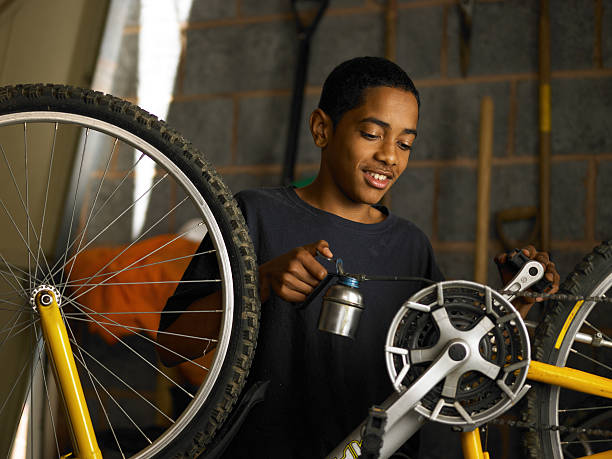
Yes, it is possible to check the bottom bracket and chainline sizes of a mid-drive motor by yourself, provided you have access to the motor’s specifications and the necessary measuring tools.
How to Check the Bottom Bracket and Chainline Sizes of a Mid-Drive Motor
- Consult the Manufacturer’s Specifications: The first step in determining the compatibility of a mid-drive motor with your bike is to refer to the manufacturer’s specifications. Look for information on the motor’s bottom bracket and chainline compatibility.
- Measure the Motor’s Bottom Bracket Dimensions: If the manufacturer’s specifications are not available or unclear, you can measure the motor’s bottom bracket dimensions yourself. Use a caliper or ruler to measure the width and diameter of the motor’s bottom bracket interface.
- Measure the Motor’s Chainline: To measure the motor’s chainline, install the motor on a compatible bottom bracket and measure from the center of the motor’s chainring to the center of the bottom bracket shell.
Additional Considerations for Mid-Drive Motor Compatibility

When assessing the compatibility of a mid-drive motor with your bike, there are several other factors to consider beyond bottom bracket and chainline sizes.
Frame Clearance
Ensure that your bike’s frame has sufficient clearance to accommodate the mid-drive motor.
Pay attention to the space around the bottom bracket area, as well as the rear triangle, to avoid any interference between the motor and the frame.
Drivetrain Compatibility
Verify that the mid-drive motor is compatible with your bike’s drivetrain components, such as the crankset, chainring(s), and derailleur.
Some motors may require specific chainring sizes or have limitations on the number of gears supported.
Battery Integration
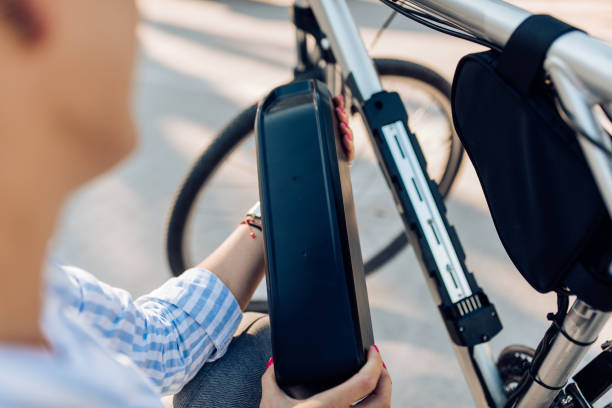
Consider how the battery will integrate with your bike when using a mid-drive motor.
Some motors are designed to work with specific battery configurations, such as downtube-mounted or rack-mounted batteries. Ensure that your bike has the necessary mounts or space to accommodate the battery.
Wiring and Cable Routing
Mid-drive motors require electrical connections to the battery, display, and other components.
Assess your bike’s cable routing options to ensure a clean and secure installation of the motor’s wiring harness.
Conclusion
Determining whether a To7motor mid-drive motor will fit your bike involves careful consideration of bottom bracket sizes, chainline measurements, and other compatibility factors.
By understanding the specifications of the DM-01 and DM-02 motors and how they relate to your bike’s dimensions, you can make an informed decision when upgrading to an e-bike setup.
Remember to consult the manufacturer’s specifications, measure your bike’s bottom bracket and chainline accurately, and consider factors such as frame clearance, drivetrain compatibility, battery integration, and wiring when assessing the feasibility of installing a mid-drive motor.
With the right knowledge and preparation, you can transform your bike into a powerful and efficient e-bike using a To7motor mid-drive motor, opening up new possibilities for your cycling adventures.
Frequently Asked Questions

1. Can I install a To7motor mid-drive motor on my bike myself?
While it is possible to install a mid-drive motor yourself, please make sure to follow the proper installation steps carefully. it is recommended to have the installation performed by a professional bike mechanic, if you are not confident in your technical skills. Proper installation is crucial for the motor’s performance, safety, and longevity.
2. What tools do I need to measure my bike’s bottom bracket and chainline?
To measure your bike’s bottom bracket and chainline, you will need a caliper or a ruler with millimeter markings. A bottom bracket tool may also be necessary to remove the existing bottom bracket cups for accurate measurements.
3. Can I use a To7motor mid-drive motor with a carbon fiber frame?
No, Generally, it is not possible to fit our mid-drive motors with carbon fiber frames. In some instances, it might be possible, provided that the frame has the appropriate bottom bracket shell dimensions and sufficient clearance for the motor.
However, it is essential to consult with the frame manufacturer to ensure that the installation of a mid-drive motor actually fits the bike and does not void the frame’s warranty or compromise its structural integrity.
4. How do I know if my bike’s drivetrain is compatible with a To7motor mid-drive motor?
To determine if your bike’s drivetrain is compatible with a To7motor mid-drive motor, refer to the motor’s specifications regarding chainring sizes, gear ratios, and derailleur compatibility.
In most cases, the DM-01 and DM-02 motors are designed to work with a wide range of drivetrain setups, but it is always best to confirm compatibility before making a purchase.


